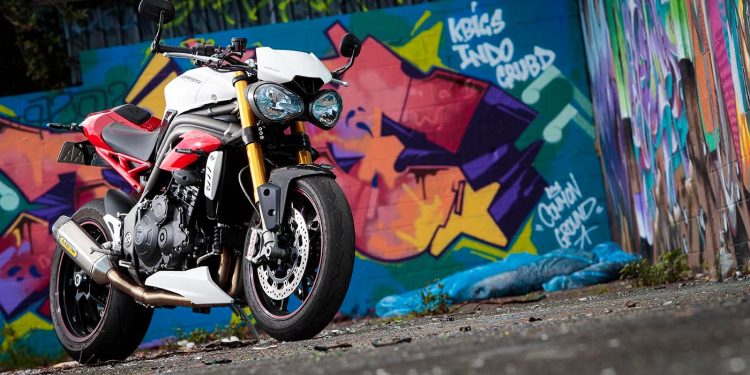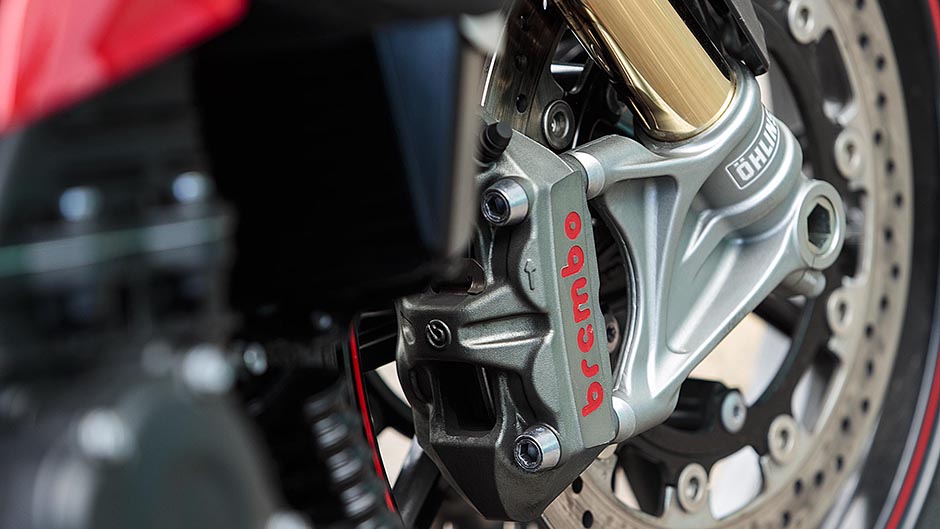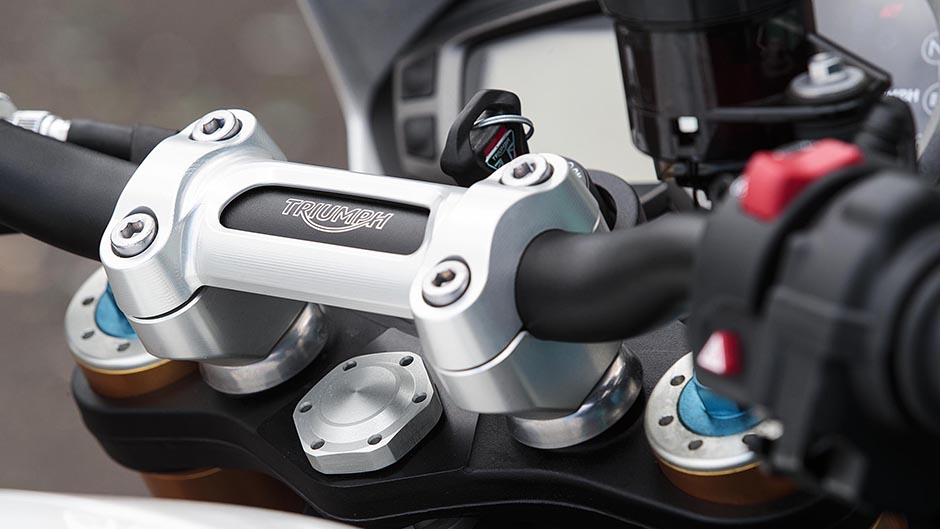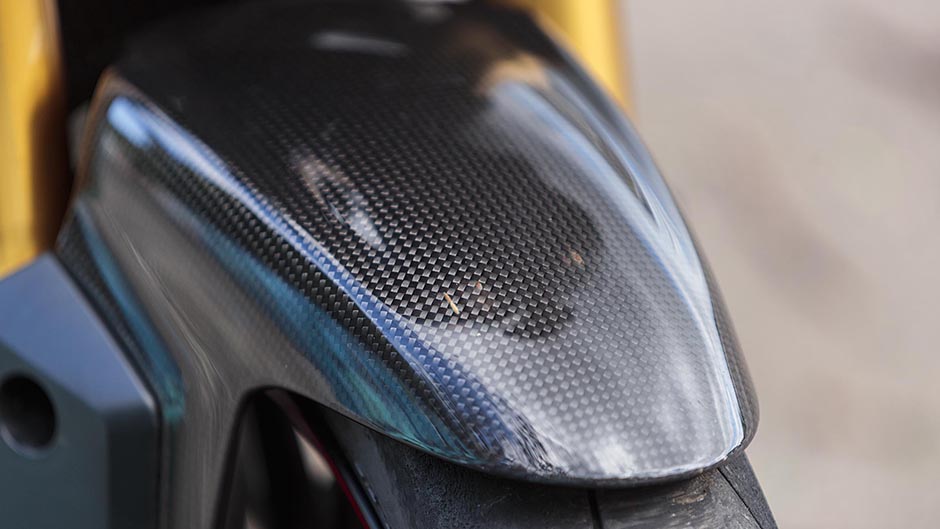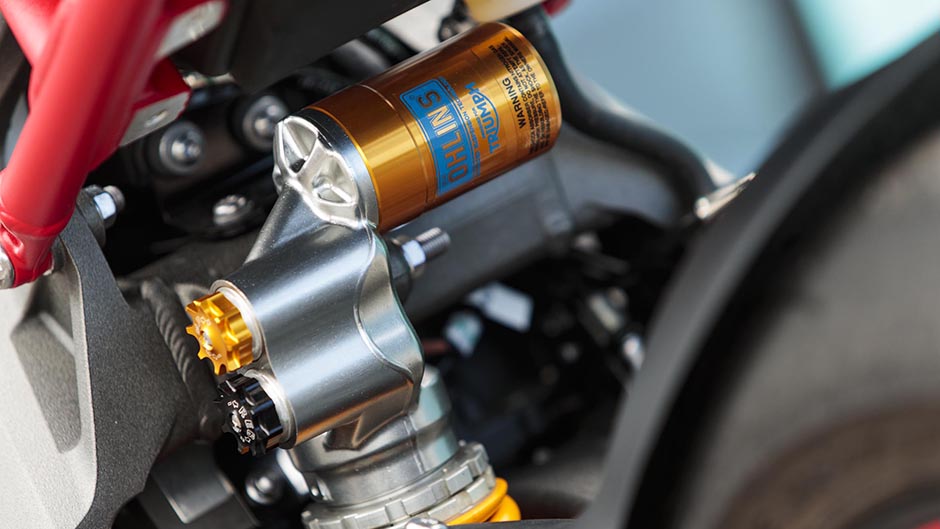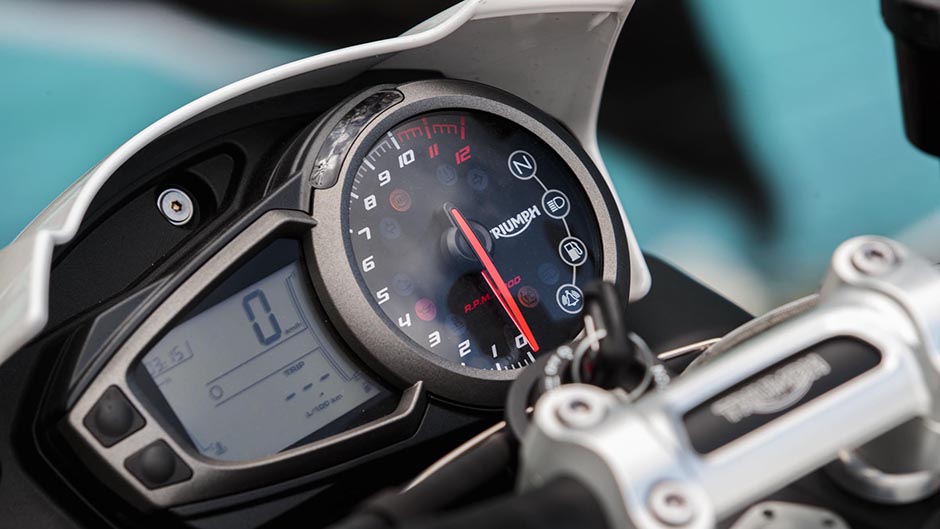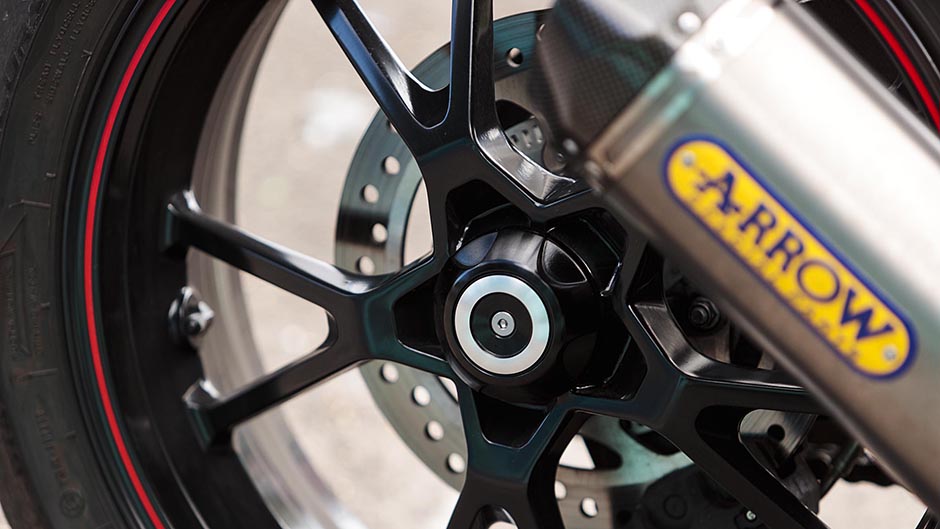2016 Triumph Speed Triple R review
Words Peter Louisson | Photos Tom Gasnier
After quite some time, the Speed Triple, the original supernaked, has received an engine update. Sensibly, Triumph has left the rest alone.
No, the Speed Triple R is not the quickest of the supernakeds out there, and nor is it the prettiest, though that’s not really what you want in a streetfighter is it? But it is still awfully quick and masters on midrange torque, making it easy to ride at mandated speeds. Triumph has also seen fit to add stuff you’d consider mandatory nowadays, like traction control which makes the engine cough and splutter when you give it the wellie in Sport mode, and prevents you from accidentally hoiking the wheel when grabbing a fistful.
Like you’d do that by accident anyway. Fortunately, there’s another couple of modes that circumvent that issue. Otherwise, it’s the little things that make the latest Speed Triple R a better thing than before, and these you really do appreciate. For instance, when not riding we’re no longer having to carry around a tennis ball in our left hand to develop the arm power required for activating the clutch lever.
The best thing of all though? That annoying bloody engine whine has disappeared, so you hear so much more of what that vocal Arrow pipe has to say. Spending up on this also relieves the bike of a whole lot of weight carried high in its not especially appealing underseat pipes. We’d just handed back another Triumph, the badboy Bobber, and fun and attention grabbing as that was – narcissists will adore it – the Spittle R was instantly more rewarding when riding away on the brand’s quickest machine.
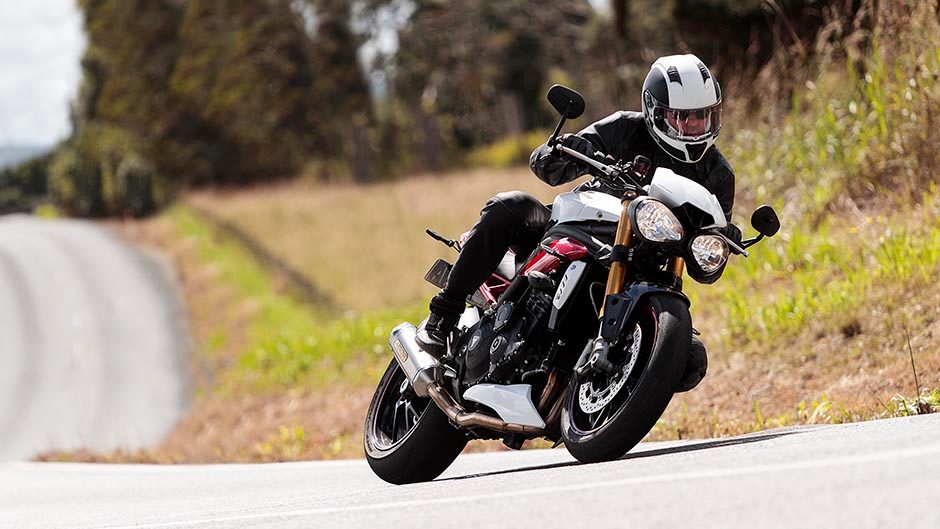
The lovely smooth and snickety nature of the gearshift, the forceful first impression of the radial-mount Brembos, and the pliant feel of the Öhlins suspension are instantly compelling, and something that you miss on machinery like the Bobber. The seat comfort is immediately apparent and appreciated too, the opposite to the the Bobber’s, where everything is designed to look spectacular first and foremost. Not that it’s a bad example of a cruiser; far from it. It’s just that sorted supernakeds are much more interesting rides.
Bobbers are more appealing as works of mechanical art. Nice and all as those instantly likeable aspects of the Speed Triple are, it’s the engine that takes centrestage for 2017. While it might still displace 1050cc or so, and while it also still has three cylinders, the rest is pretty much new. We’re not going to go through a list of everything that’s changed because it is extensive and runs in total to over 100 new parts, the crank listed as one of these novelty items. What’s kind of interesting is that superficially nothing much has changed! Because ours was running a full titanium exhaust system and was pretty loud, we opted to head right out into the wilds of the countryside to undertake performance testing.
It still runs 0-100 in around 3.5sec – actually we got 3.4sec this time, but whatever – and the overtake is no quicker at 1.5sec. Nor is there anything different about its stopping prowess, exactly the same 40m and change as last time.
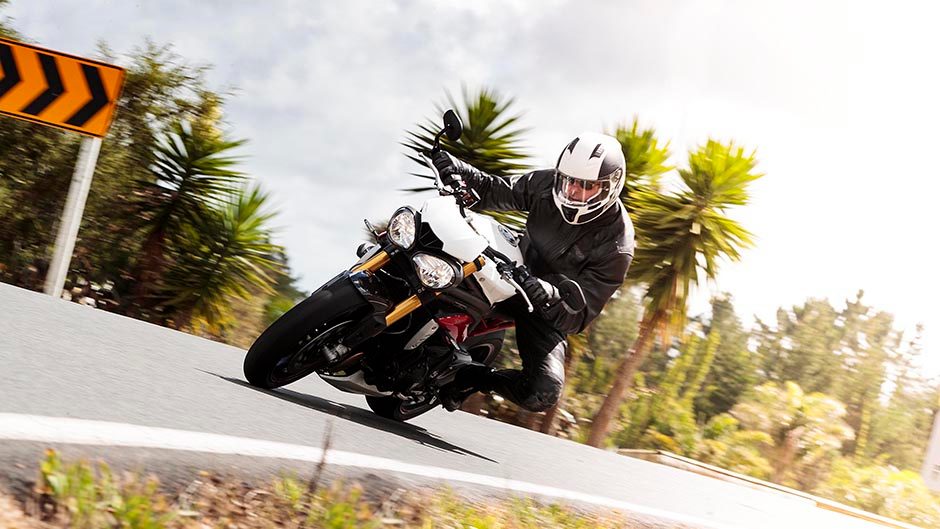
However, we did note that it was awfully difficult to get any runs where the traction control didn’t seem to be intervening. Wish I’d done a little research before rushing off and attaching the timing gear, because when you slot it into Track mode, and not Sport as I was using, the TC backs off. Doh. Anyhow, you’d expect the smallest wee increment in acceleration as there’s five extra horses and a similar number of Nms added.
In the overall scheme of things, this is still abundantly quick, and just a hair behind the true monsters in the class like the Tuono and S 1000 R, both packing an extra 30hp odd, and costing much the same, around $26k. However, the easy ride nature of the Speed Triple is still there in leaps and bounds. Where the Tuono doesn’t really do engine speeds below about 3000rpm without having stallion-type hissyfits, the Spit hauls away with attitude from 2000rpm, and by 3000 is fizzing and popping. At 4000 which is an indicated 110 on the open road (or 103 in the real world) the Triumph is truly fit, its motor doing the equivalent of a Popeye after downing some of that disgusting green gunk.
From 4000 to 5000rpm, it simply doesn’t matter how steep the incline, this will roar up it in sixth providing things don’t get too tight and turnful. Not that you’ll always want to do this, for the transmission shifts in such liquid fashion you’ll be wanting to change down and up the revs just for the pleasure and the noise of it all. Back in town and commuting in fifth at 50km/h is a doddle.
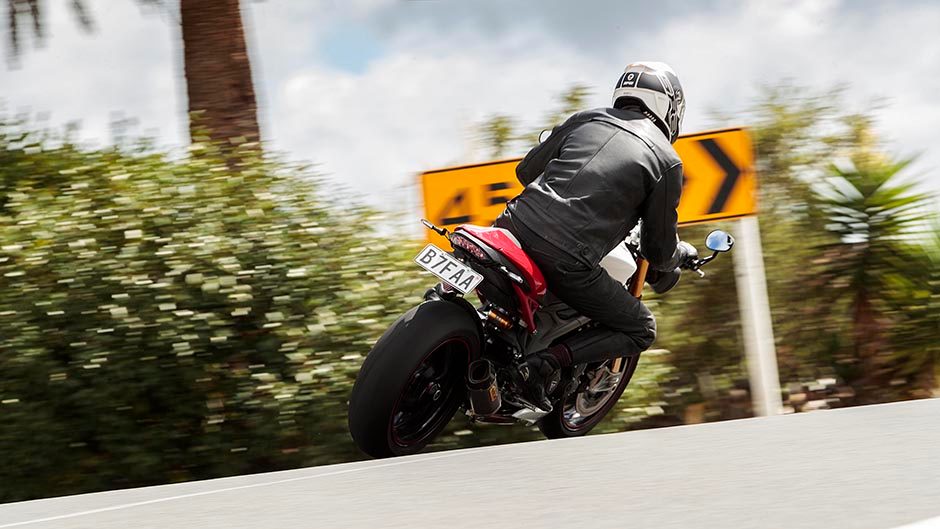
All the while the whining that previously you subconsciously dialed out because you were so used to doing that at home is mercifully absent; there’s just the merry poppings of the exhaust on the overrun, and the baying howl of the hounds as you hit it with another fistful. There’s another thing about the new Spittle that’s worthy of a celebratory drink too; it is much more abstemious than before, imbibing just 3.5L for every 100km if you’re cruising at an indicated 105, and we managed 5.0 overall. It’s Euro4 compliant too, dragged into emissions cleanliness thanks to all the other associated head and intake tract work.
The rest is largely the same, and as indicated that’s no bad thing. The seat on this is amongst the most comfortable I’ve encountered on a bad boy naked bike, though the slight forward lean to the riding position, and tallish peg siting does tend to unweight your posterior some. Just saying, the padding is appreciated. The seat design reminds rather of a modern road cycle’s, with added padding for your sit bones, and the area in between a little leaner on support. Whatever it works just like you’d want it to.
Holding the show together is the same frame and single-sided swingarm as before, and while it works well others now are better. Comprised mainly of ferrous material, the R is still the wrong side of 210kg whereas the competition, derived as they are from aluminium bikes like the S 1000 RR from 2015, and the RSV4, are much closer to the 200kg mark. That’s apparent when you’re chopping and changing direction through your favourite bits of back country road, imagining you’re carving up the Stelvio Pass.
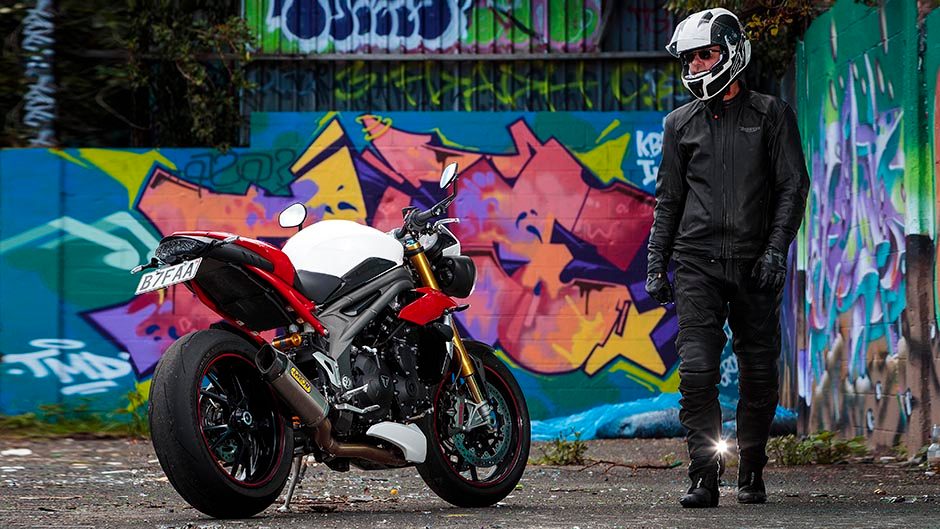
There’s a meatiness to the steering where others are lighter, and you’re also aware of that lump of mass centralised below and between your knees so it doesn’t change direction quite as naturally as some of the lighter, newer machinery. That said, the suspension does its job in sublime fashion; fully adjustable top notch Öhlins stuff front and rear. Providing the preload either end is about right for your body mass, you can dial in a mix of comfort and control at the rear easily enough by messing with rebound and compression settings, changing them a click at a time.
You’ll need a shifting spanner to mess with the front end, but preload changes are simple enough and, like the rear, easily felt. Thus, you can readily get to pretty much however you like your suspension settings to be, quickly and easily. I like mine a bit on the plush side, but didn’t really have to do much because the seat comfort and general riding position is, as mentioned, brilliant. We found it much easier to adjust to our liking than, say, the V4 Tuono. And that’s what it’s up against essentially.
The Tuono is rawer, firmer, faster, and arguably sexier. But there’s something endearing about the Speed Triple R, its sense of evolutionary advancement and the fact they’ve pretty much gotten everything just so now.
No, it’s not the quickest or lairiest, nor is it the last word in handling. It’s not the cheapest of the genre either, but it’s possibly now the supernaked that’s the most rounded. And that’s rather appropriate given it was the first on the block.
| Model | Triumph Speed Triple R | Price | $25,990 |
| Engine | 1050cc, liquid-cooled, fuel injected, IL3, 103kW/112Nm | Drivetrain | 6-speed, chain final drive |
| 0-100km/h | 3.40sec | 100-0km/h | 40.780m |
| 80-120km/h | 1.57sec (43.63m) | Weight | 210kg |


